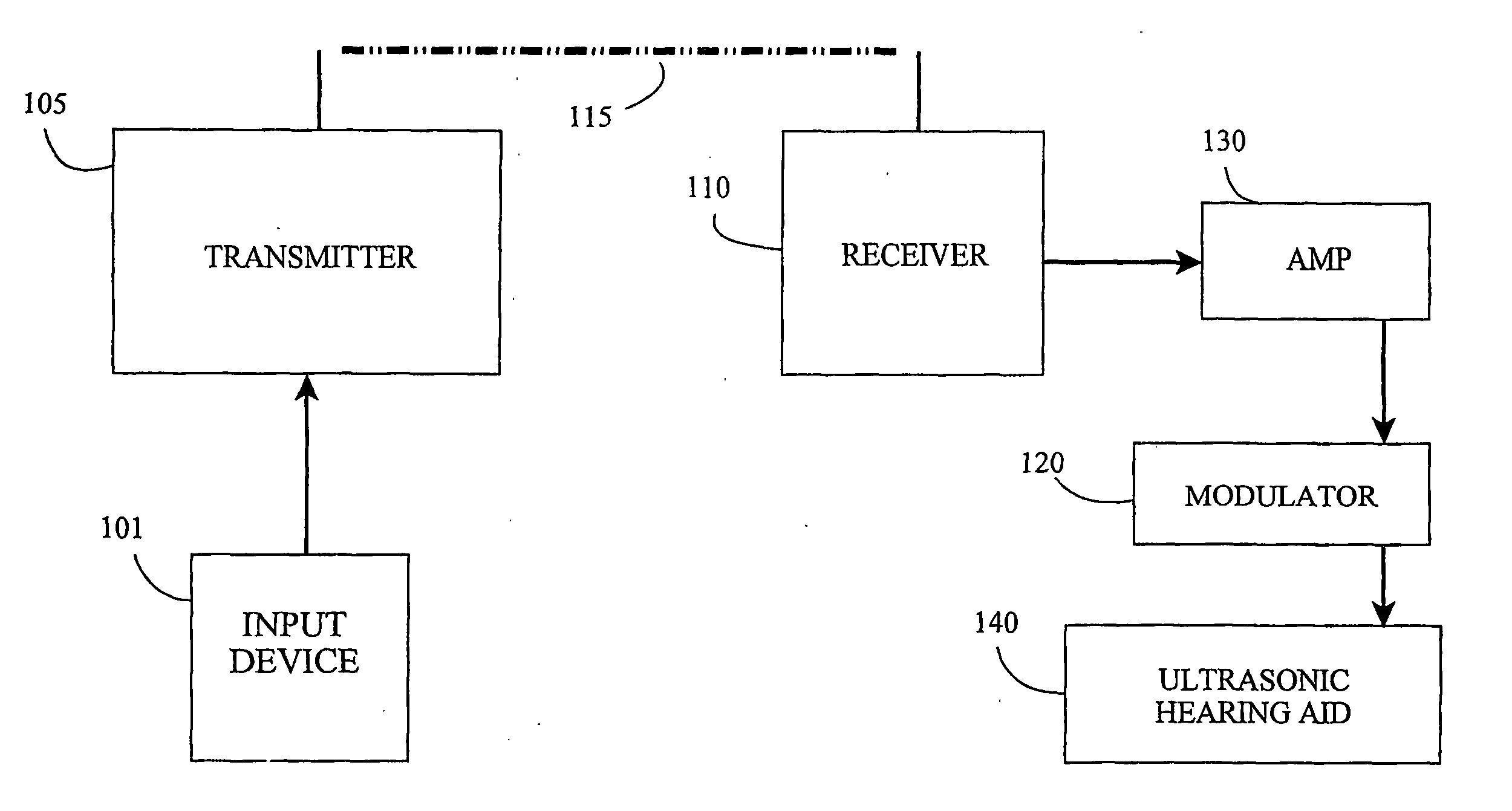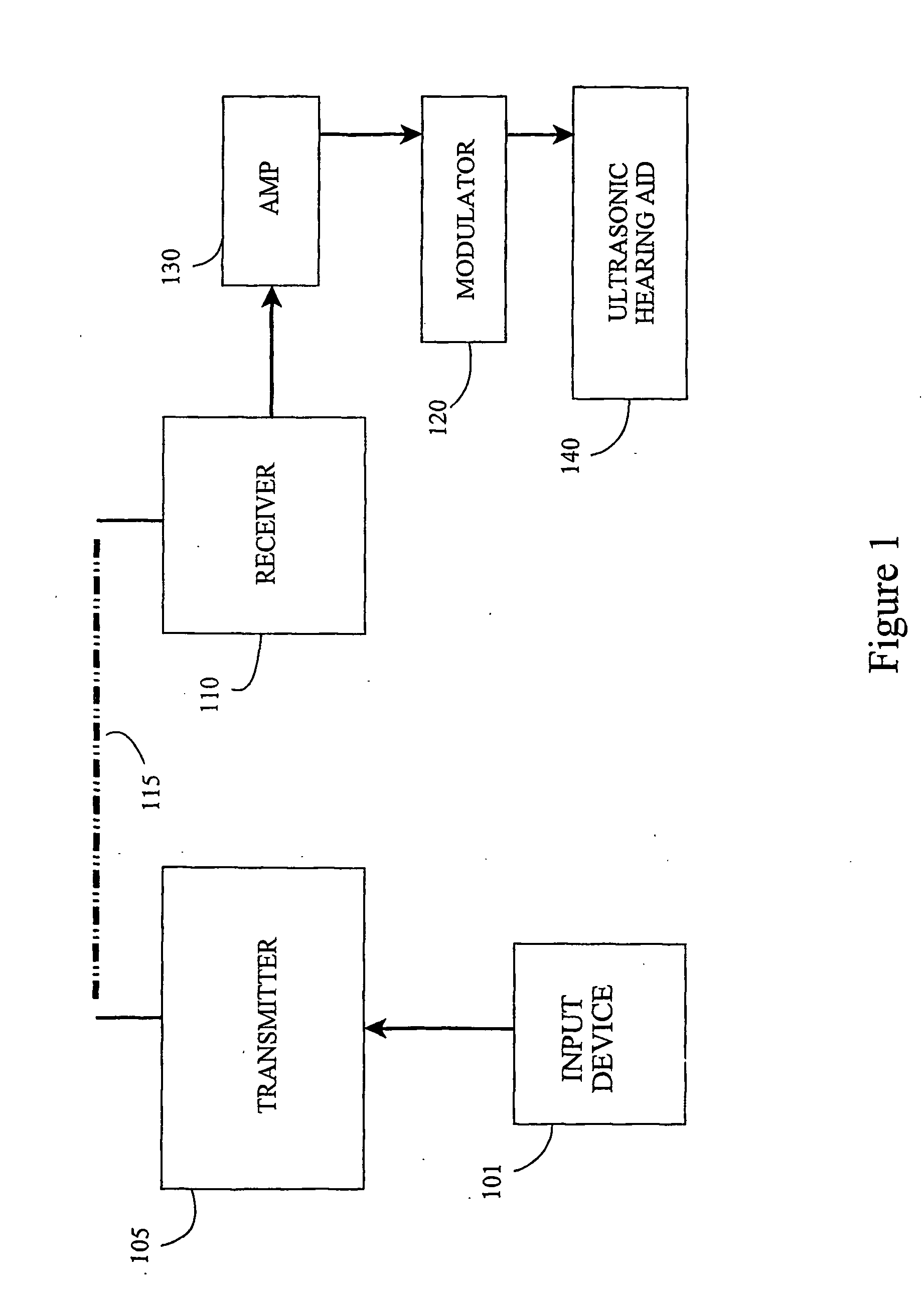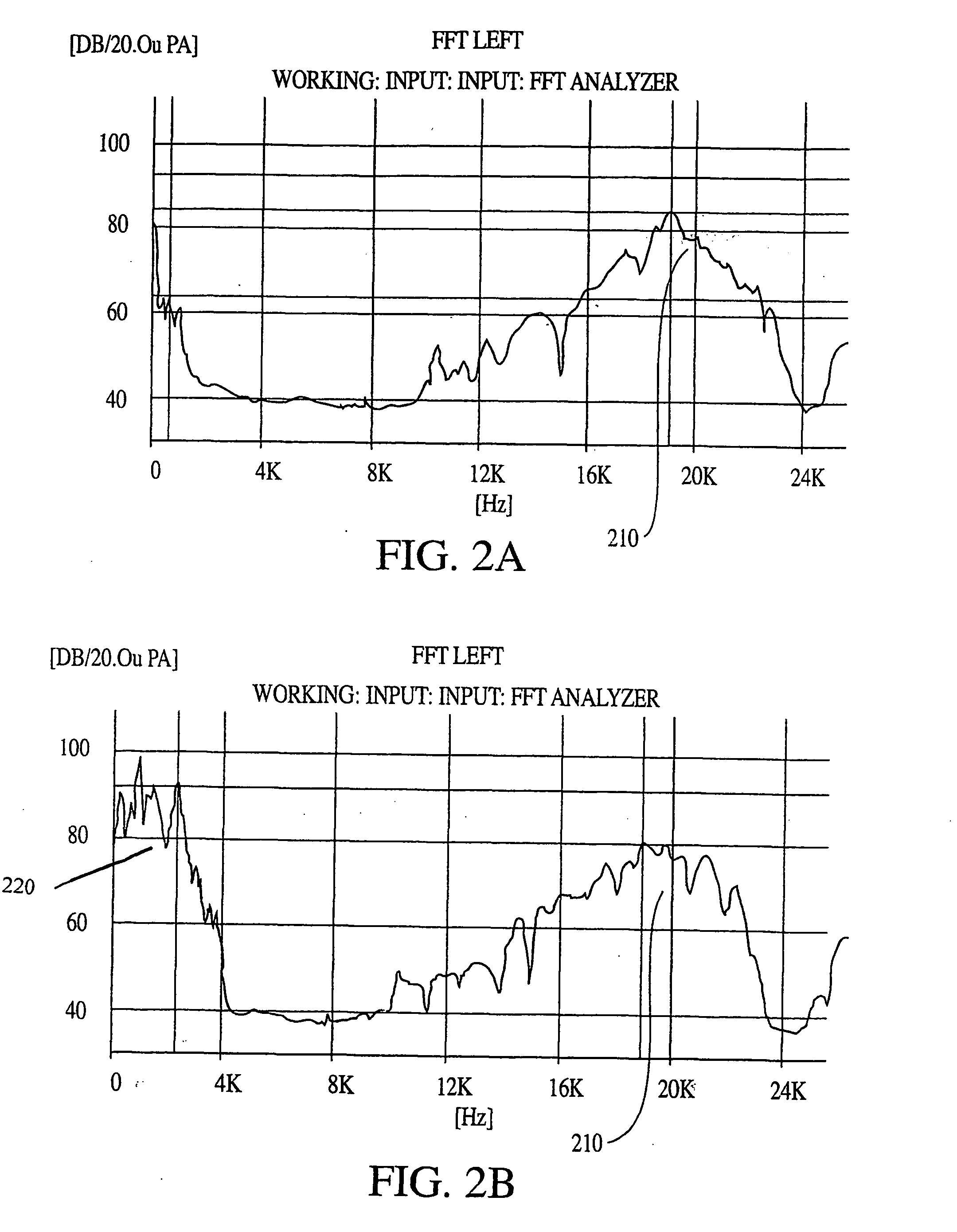Hearing device improvements using modulation techniques
a modulation technique and hearing device technology, applied in the field of hearing aids, can solve the problems of ineffective low frequency and broad band noise, poor operability of bone conduction devices, and inability to operate in a 120 dba noise environment, and achieve the effect of improving the operability of hearing devices
- Summary
- Abstract
- Description
- Claims
- Application Information
AI Technical Summary
Benefits of technology
Problems solved by technology
Method used
Image
Examples
Embodiment Construction
[0042] The capability of the brain to interpret signals from both the acoustic and vestibular nerves, and the ability of the auditory system to respond to a greater sonic frequency range than is provided via the cochlea, coupled with the observed responsiveness of the brain to modulated signals, provide the basis for the present invention. The invention provides hearing device improvement embodiments that are enhancements for ultrasonic and bone conduction devices, using modulation techniques adapted to the characteristics of auditory and vestibular hearing.
Wireless Ultrasonic Hearing Aid
[0043] In one embodiment the invention is an improvement on the supersonic hearing aid in that the input is not restricted to a microphone sensitive in the audiometric frequencies. The input to the hearing aid can be airborne ultrasound, radiowaves (i.e. microwaves), infrared, frequency modulation, magnetic induction or a laser. The carrier can be modulated by natural or signal processed speech u...
PUM
 Login to View More
Login to View More Abstract
Description
Claims
Application Information
 Login to View More
Login to View More - R&D
- Intellectual Property
- Life Sciences
- Materials
- Tech Scout
- Unparalleled Data Quality
- Higher Quality Content
- 60% Fewer Hallucinations
Browse by: Latest US Patents, China's latest patents, Technical Efficacy Thesaurus, Application Domain, Technology Topic, Popular Technical Reports.
© 2025 PatSnap. All rights reserved.Legal|Privacy policy|Modern Slavery Act Transparency Statement|Sitemap|About US| Contact US: help@patsnap.com



